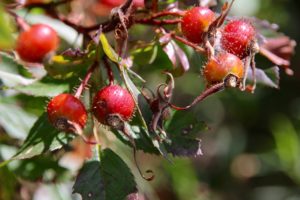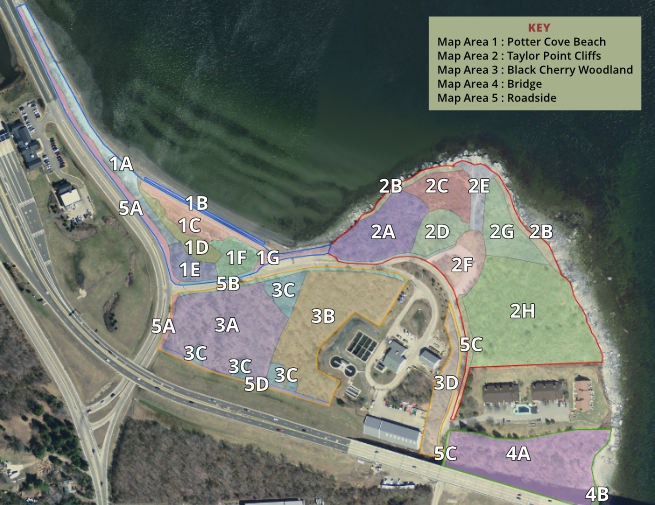Common Name: Virginia Rose, Pasture Rose, Wild Rose
Specific Name: Rosa Virginiana
Known Occurrence at Taylor Point:
Map areas: Beach 1A, Beach 1C
Category: Native, Shrub

Ecological Considerations:
Rosa virginiana, commonly known as Virginia rose, is an upright shrub growing between four to six feet tall. The glossy dark green foliage develops excellent yellow to red fall color. This species bears fragrant pink flowers that are two to three-inches in diameter and occur in clusters of five to eight.
Virginia rose grows along the edges of salt marshes, roadsides and in pastures. This species succeeds in moist soils, growing well in heavy clayey soils. It prefers a sunny position and does well under winter conditions.
Map areas where this plant can be used for revegetation:
Upper Beach – 1C
Northwest Shrubland – 2C
Successional Field – 2D
Black cherry woodland – 3C
Propagation Mechanisms/Strategies for Encouraging its Establishment:
Best Planting Practices/Options and Pros and Cons of Options:
Virginia rose is a hardy species of dry and sometimes saline habitats.
Key Issues Regarding its Ecology (e.g. Which Invasives Threaten it, What Conditions Favor it):
This shrub is a good choice for dry, sandy places in the garden.
Associated Ecological Benefits: Attracts bees and pollinators
Availability of Locally Sourced Seeds and Plants:
The Farmer’s Daughter
Wildwood Nurseries
Rhody Native
Edge of the Woods Native Plant Nursery – Orefield, PA
ArcheWild Native Nurseries – Quakertown, PA
Toadshade Wildflower Farm – Frenchtown, NJ
Case Studies of Native Plant Establishment Efforts/Lessons Learned:
Additional photos:


Sources cited:
Search Rhode Island Native Plant Guide
Missouri Botanical garden
Go Botany
Key Words:
Native shrub
Virginia rose
Pasture Rose
Wild Rose
Rosa virginiana
